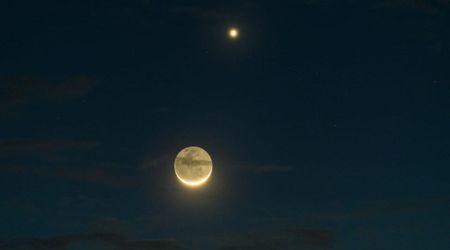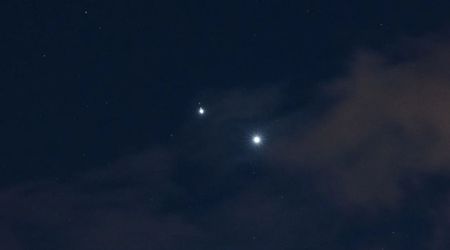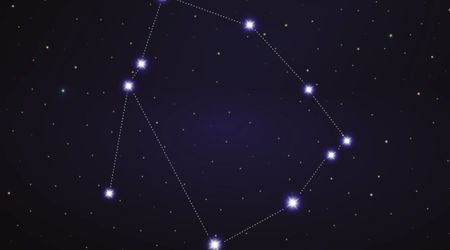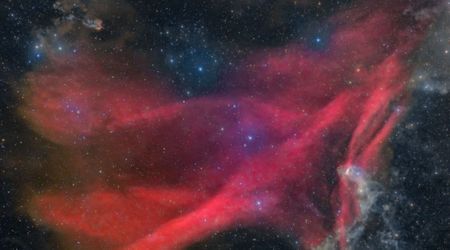First spectacular images from Vera C. Rubin Observatory are finally here

The Vera C. Rubin Observatory has released its inaugural set of three images, offering a stunning sneak peek of the cosmos. The initial collection features a breathtaking nebula, a sky teeming with brilliant stars, and a collection of swirling galaxies. Equipped with the world's largest digital camera, this ground-based telescope is poised to transform astronomy with its expansive wide-angle and potent lens capabilities. Early indications suggest the Rubin Observatory will provide an unprecedented view of the universe, according to ABC News.

T-7 days! We're getting so close to the reveal of NSF–DOE Rubin Observatory's first images 🤩#RubinFirstLook
— NSF-DOE Rubin Observatory (@VRubinObs) June 16, 2025
Get ready for your first preview of how Rubin will #CaptureTheCosmos in its decade-long survey 🎬
🗓️: June 23, 2025
⌚️: 11am US EDT
🔗: https://t.co/147xo1VmyO
A striking photograph accompanies the release, showing the interior of a space observatory with a large blue telescope cradle gazing up at the night sky. These images serve as a tantalizing precursor to a live stream scheduled for 11 am EDT on Monday that promises to unveil more ultra-high-definition video. Astronomers are already expressing astonishment at these initial previews. Rachel Webster, an astrophysicist at the University of Melbourne, remarked on the vast scale of each picture, stating she was stunned by what she saw.
Today's the day — it's T-0!
— NSF-DOE Rubin Observatory (@VRubinObs) June 23, 2025
Your full First Look at images from @NSF–@doescience Rubin Observatory is just hours away! We're about to reveal the preview of the greatest cosmic movie ever made 🎬 #RubinFirstLook #CaptureTheCosmos
⌚️ 11am US EDT
🔗: https://t.co/1a74X2edp8
Among Rubin's early triumphs is a composite image of the Lagoon and Trifid nebulae, two colossal regions of interstellar gas located approximately 5,200 and 9,000 light-years away in the constellation Sagittarius. Astrophysicist Jonti Horner from the University of Southern Queensland described these nebulas as "jewels of the night sky," often targeted by amateur astronomers. Professor Horner characterized the level of detail as "breathtaking," noting that "even the furthest you zoom in, it's pin-sharp."
Introducing...your sneak peek at the cosmos captured by @NSF–@doescience Vera C. Rubin Observatory!
— NSF-DOE Rubin Observatory (@VRubinObs) June 23, 2025
Can you guess what regions of sky they are?
This is just a peek...join us at 11am US EDT for your full First Look at how Rubin will #CaptureTheCosmos!https://t.co/1a74X2edp8 pic.twitter.com/DE3tx2RQI4
While other prominent space telescopes can achieve similar levels of detail, Professor Webster highlighted Rubin's unique advantage: its wide-angle capability. "Here, we've got the depth of a big telescope with a very big field of view, and that's very exciting," she explained. Professor Webster added that the vibrant colors in the images provide astronomers with crucial information about the physical processes occurring within the nebulae.

For instance, the pink hues within the nebulas indicate a high concentration of hydrogen. "There are lots of stars in the pink areas, and those are hot young stars," Professor Webster stated. However, what truly distinguishes Rubin's imagery is the prominent orange regions surrounding the nebulas. Professor Webster suggests this orange likely points to the presence of dust, a feature she hasn't observed with such clarity or on this grand scale before. While not entirely unexpected, she noted, "you don't normally see this large scale."

The two other images released by Rubin extend beyond our galaxy, focusing on the Virgo Cluster, a vast collection of galaxies situated 55 million light-years away in the constellation Virgo. This entire cluster spans approximately 8 degrees across the sky, making it too wide for the most powerful telescopes to capture in a single frame. However, as Swinburne University astrophysicist Tania Barone emphasized, Runin's design allows it to meticulously observe the entire cluster. "The James Webb Space Telescope would see maybe one of those galaxies, but we get to see this whole zoomed out picture, to put it all into context," Dr Barone explained, as mentioned by the outlet.

The Rubin Observatory, set to begin its 10-year survey this year, will photograph the night sky every few seconds. With its 8.4-meter mirror and 6613-pound camera, it will document the entire southern sky every few days, enabling the detection of subtle, rapid changes. This will open new research fields in astrophysics and dark matter, and be vital for discovering closer objects like asteroids and Solar System bodies. "For the Solar System, this is almost like humanity opening its eyes for the first time," Professor Horner stated. Astronomers anticipate significant results almost immediately, with Professor Webster predicting "some super results" within the first 12 months. The observatory's impact is expected to last well beyond its initial decade, Professor Horner believing, "It'll still be delivering new results, even then."









